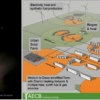1.6 National and International Context

This lesson looks in more detail at the big picture and the issues that relate to national and international policy. For those professionals dealing with retrofit on a large scale or at policy level, these wider issues are very important. However, we can all be affected by government policies so it is useful to understand the big picture and how our […]
Footnotes
- Source: https://www.gov.uk/government/uploads/system/uploads/attachment_data/file/386858/Estimates_of_heat_use.pdf
- http://www.policyexchange.org.uk/publications/category/item/warmer-homes-improving-fuel-poverty-and-energy-efficiency-policy-in-the-uk
- Marmot Review: Fair Society, Healthy Lives
- Accessed 07/07/23 – Why the UK needs an ambitious clean growth plan now : https://green-alliance.org.uk/wp-content/uploads/2021/11/Why_the_UK_needs_an_ambitious_clean_growth_plan_now.pdf
- https://www.iea.org/reports/securing-clean-energy-technology-supply-chains
- Uk Government powering up: https://www.gov.uk/government/publications/powering-up-britain#:~:text=We%20will%20move%20towards%20energy,will%20play%20in%20that%20transition.
- https://www.bbc.co.uk/news/science-environment-65602293
- https://openknowledge.worldbank.org/bitstream/handle/10986/22787/9781464806735.pdf
- http://www.imf.org/external/pubs/cat/longres.aspx?sk=42940.0